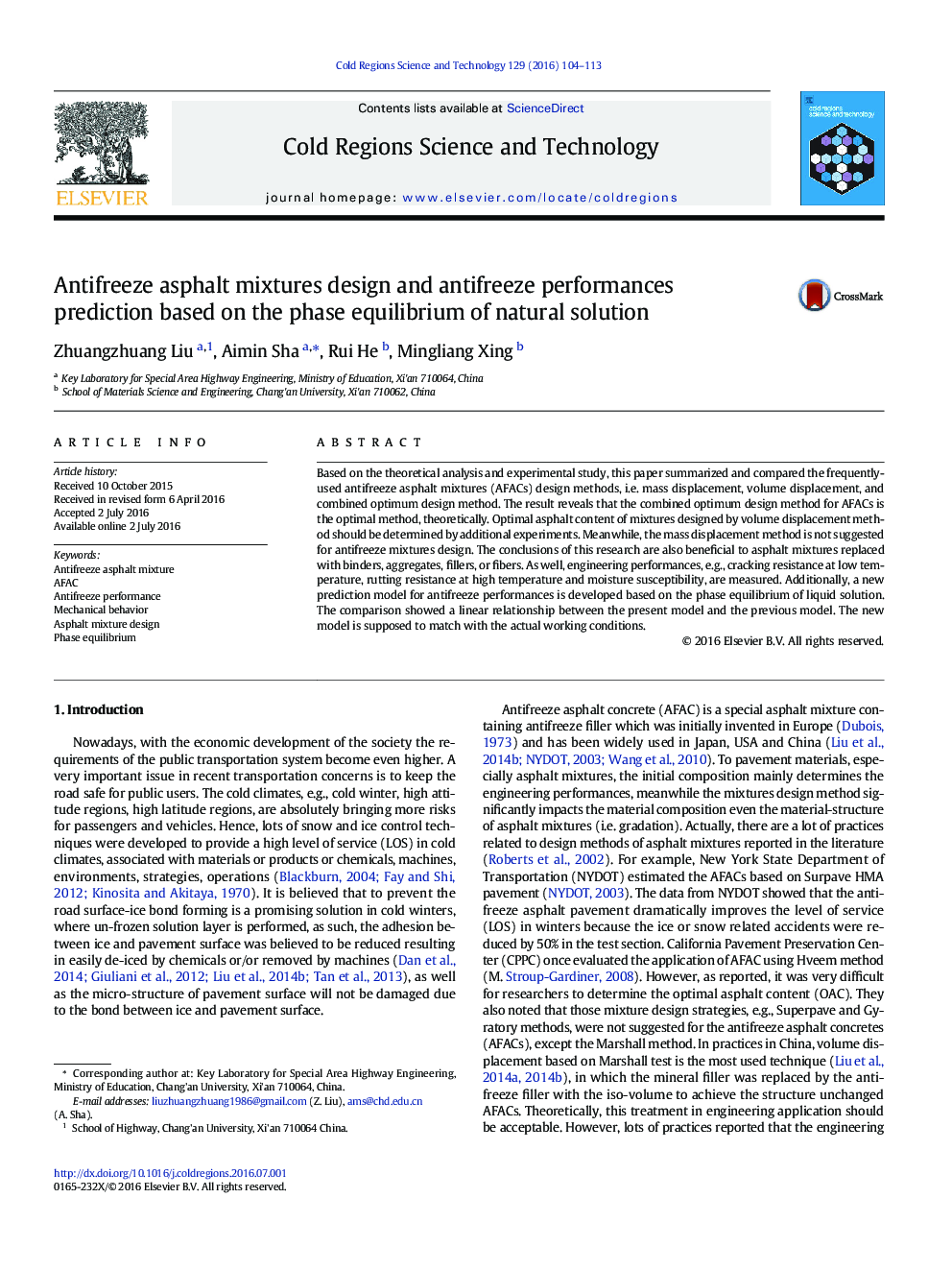| Article ID | Journal | Published Year | Pages | File Type |
|---|---|---|---|---|
| 4675634 | Cold Regions Science and Technology | 2016 | 10 Pages |
•Design methods of antifreeze asphalt mixtures (AFAC) are summarized.•Evaluation method and expression are developed based on the natural phase equilibrium.•Engineering performances are analyzed in laboratory based on three mixture design methods.•The finding also benefits to those mixtures replaced with binders, aggregates, fillers, or fibers.
Based on the theoretical analysis and experimental study, this paper summarized and compared the frequently-used antifreeze asphalt mixtures (AFACs) design methods, i.e. mass displacement, volume displacement, and combined optimum design method. The result reveals that the combined optimum design method for AFACs is the optimal method, theoretically. Optimal asphalt content of mixtures designed by volume displacement method should be determined by additional experiments. Meanwhile, the mass displacement method is not suggested for antifreeze mixtures design. The conclusions of this research are also beneficial to asphalt mixtures replaced with binders, aggregates, fillers, or fibers. As well, engineering performances, e.g., cracking resistance at low temperature, rutting resistance at high temperature and moisture susceptibility, are measured. Additionally, a new prediction model for antifreeze performances is developed based on the phase equilibrium of liquid solution. The comparison showed a linear relationship between the present model and the previous model. The new model is supposed to match with the actual working conditions.
